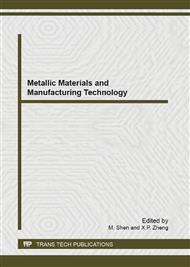p.80
p.84
p.88
p.92
p.97
p.102
p.106
p.110
p.117
Research on Ultrasonic Testing of Coarse-Grain Materials with Hilbert-Huang Transform
Abstract:
In ultrasonic testing of coarse-grain materials, signal to noise ratio (SNR) is so poor because of the serious structure noise, and reflected wave from defects is difficult to be identified. In order to improve SNR and increase the reliability of ultrasonic testing for coarse grain materials, Hilbert-Huang Transform (HHT) is introduced to analyze and process the testing signal here. Firstly, detected signals from the coarse grain material can be collected by using ultrasonic test system; And then many Intrinsic Mode Function (IMF) can be obtained according to Empirical Mode Decomposition (EMD), and marginal spectrum of different mode can be gotten by Hilbert transform; And finally, the noise should be removed after analyzing the time-frequency information, and SNR is able to be enhanced and the reflection wave from defect is being more obvious. It was shown from the experimental result that the ineffective structure noise could be removed after HHT, and SNR could be improved and the defect reflection is more outstanding.
Info:
Periodical:
Pages:
97-101
Citation:
Online since:
September 2013
Authors:
Keywords:
Price:
Сopyright:
© 2013 Trans Tech Publications Ltd. All Rights Reserved
Share:
Citation:


